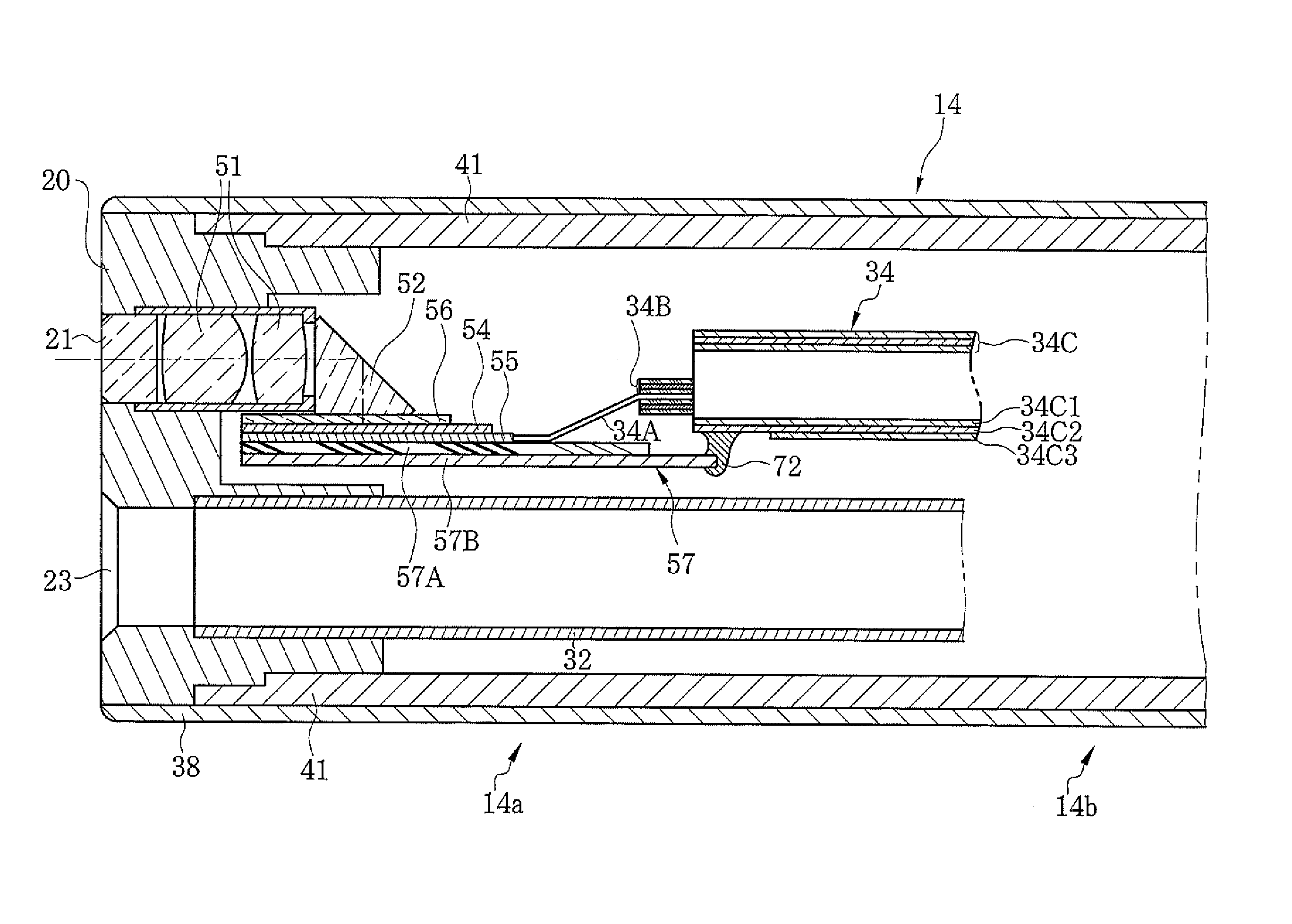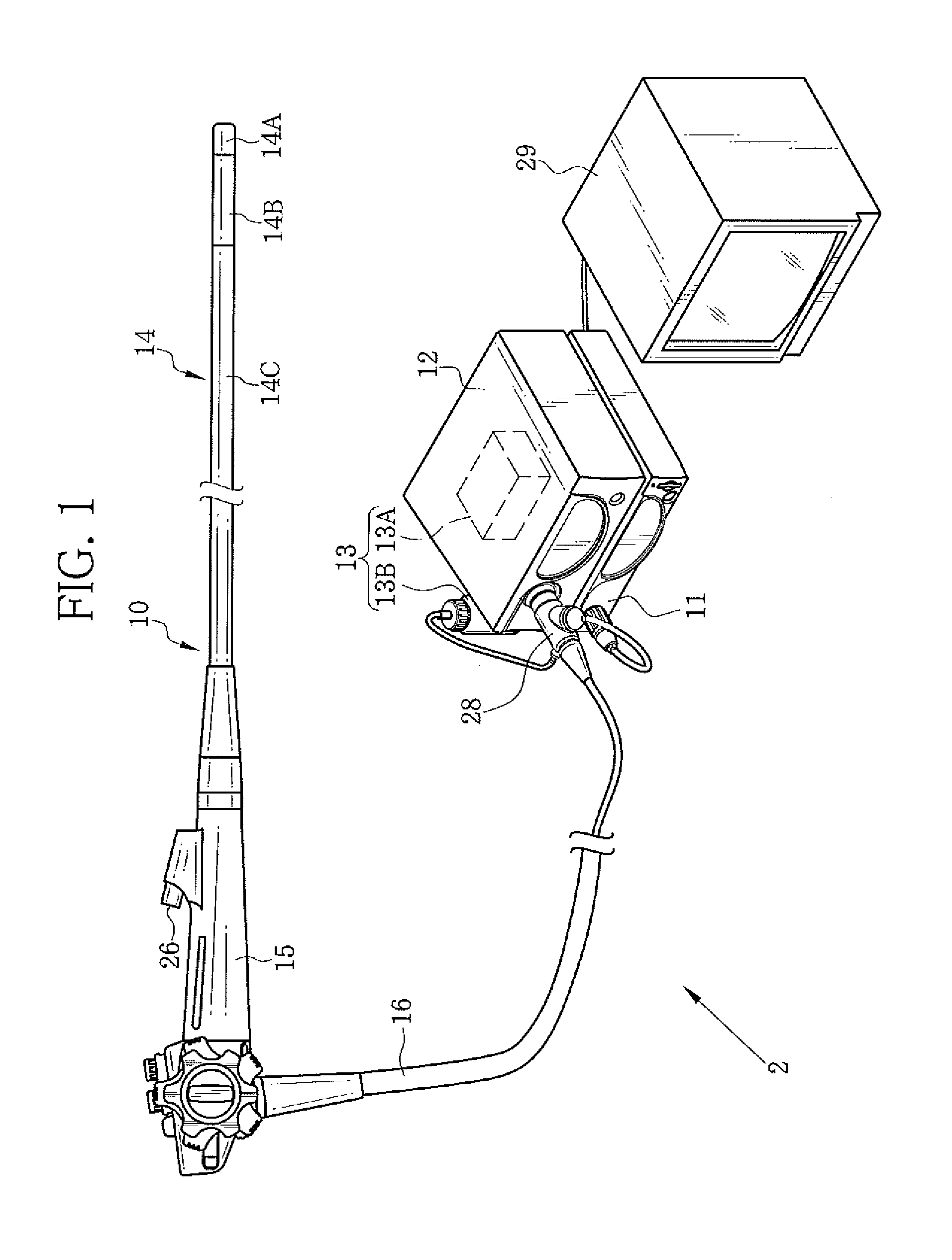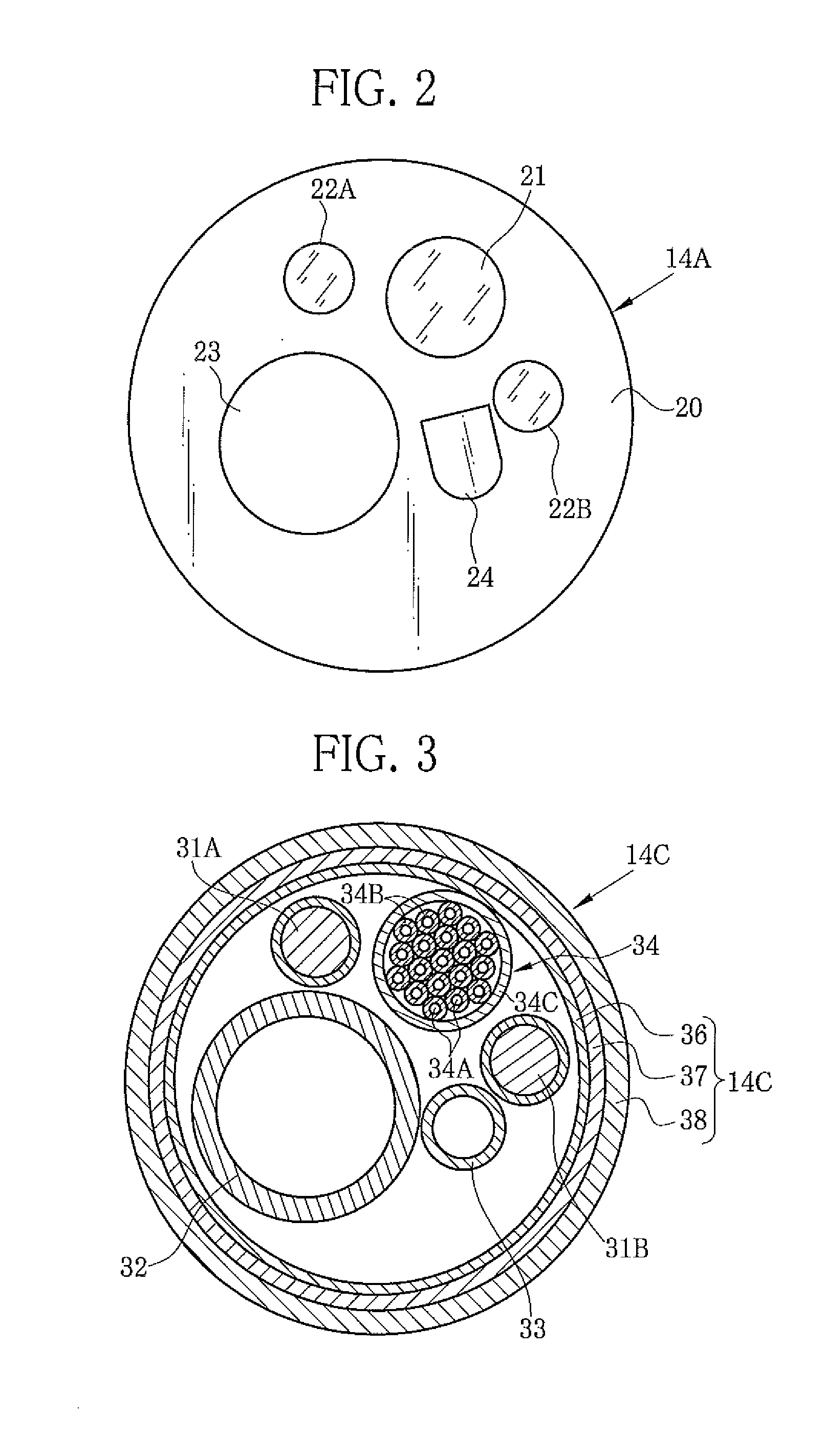Endoscope
a technology of endoscope and endoscope, which is applied in the field of endoscope, can solve the problems of increased heat from the image sensor, unstable operation of the image sensor, and deterioration of image quality, and achieve the effect of low manufacturing cos
- Summary
- Abstract
- Description
- Claims
- Application Information
AI Technical Summary
Benefits of technology
Problems solved by technology
Method used
Image
Examples
first embodiment
[0038]The distal portion of the endoscope 10 according to the present invention incorporates the imaging section. As shown in FIG. 4, the imaging section is provided with an objective optical system 51, a prism 52, and an image sensor 54. Image light of the region of interest captured through the capture window 21 is incident on the prism 52 through the objective optical system 51. The prism 52 refracts the image light from the objective optical system 51 in a substantially vertical direction, and thereby forms an image of the region of interest on an imaging surface of the image sensor 54. The image sensor 54 is a CCD image sensor, a CMOS image sensor, or the like, and generates an image signal into which an image is converted photoelectrically. The image signal is outputted through a circuit board 55 provided on the opposite side of the imaging surface that is parallel (or substantially parallel) with a direction of insertion of the insert section 14. The circuit board 55 is elect...
second embodiment
[0049]Next, referring to FIG. 6, an endoscope according to the present invention is described. A heat dissipation substrate 75 is disposed on the opposite side of the imaging surface of the image sensor 54 through the circuit board 55 such that a plane direction of the heat dissipation substrate 75 is parallel with (or substantially parallel with) the image sensor 54. The heat dissipation substrate 75 is provided with first to third high thermal conductive layers 75A, 75B, and 75C. The first high thermal conductive layer 75A is sandwiched by the second and third high thermal conductive layers 75B and 75C. In this embodiment, the first high thermal conductive layer 75A is made from electrically insulating and thermally conductive material. Each of the second and third high thermal conductive layers 75B and 75C is made from material with good thermal conductivity. The first to third high thermal conductive layers 75A, 75B, and 75C are adhered together with an adhesive. Note that, like...
PUM
 Login to View More
Login to View More Abstract
Description
Claims
Application Information
 Login to View More
Login to View More - R&D
- Intellectual Property
- Life Sciences
- Materials
- Tech Scout
- Unparalleled Data Quality
- Higher Quality Content
- 60% Fewer Hallucinations
Browse by: Latest US Patents, China's latest patents, Technical Efficacy Thesaurus, Application Domain, Technology Topic, Popular Technical Reports.
© 2025 PatSnap. All rights reserved.Legal|Privacy policy|Modern Slavery Act Transparency Statement|Sitemap|About US| Contact US: help@patsnap.com



